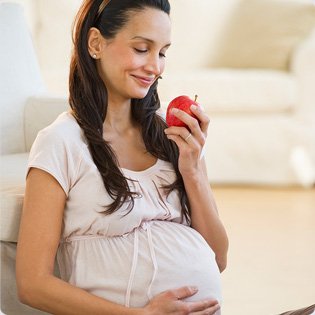Dangers Posed By Pesticides During Pregnancy
4 min read
An expectant mother’s exposure to commonly used pesticides might pose risks to her developing fetus comparable to those long associated with tobacco smoking, new research suggests.
In both cases, a fetus exposed to such chemicals during a mother’s pregnancy might result in childbirth taking place a few days earlier and the newborn could weigh at least one-third of a pound less than when there’s no such exposure. And this is not research about babies born to moms who spray chemicals on crops or who work for Orkin, either.
“This is not an unusual group,” said Dr. Bruce Lanphear, about the women who were studied. “These are women exposed primarily through diet and perhaps pesticides used in and around the yard,” said Lanphear, a researcher on the study of organophosphate pesticide exposure published Thursday in Environmental Health Perspectives.
Nearly all pregnant women carry pesticide residues in their bodies. The new study’s 306 expectant moms — from a diverse range of economic and racial groups and from urban, suburban and rural areas in and around Cincinnati — were no exception.
Lanphear and his team calculated an average 150-gram reduction in baby birthweight (about one-third of a pound) and a half-a-week earlier welcome into the world when they compared the 15 percent of the women in the study with the highest exposure to the 15 percent studied who had the lowest exposure to organophosphate pesticides, as estimated from chemical byproducts in their urine. The high exposure women had 10 times the level of pesticide in their bodies as those in the low exposure group.
“Preterm birth is probably the single most important factor for infant mortality,” said Lanphear, adding that preterm birth and low birthweight have also been linked to a range of future health problems, from cognitive problems to heart disease.
“Maybe for an individual child the exposure is not a major risk factor,” said Lanphear of Simon Fraser University in Vancouver. “But when you shift the entire population downward by 150 grams, it can have a dramatic impact.”
A drop in womb time from 39 and a half weeks to 39 weeks, for example, might not be detrimental. But if a developing fetus is already at risk for being born preterm — say, at 34 weeks — because of other factors, then another half a week could prove significant.
Even babies born at 37 weeks, at the threshold of what is considered full term, the reduction of time in the womb appears to have negative effects such as an increased risk of asthma, suggests a separate study published in March.
What’s more, a pregnant woman is generally around more than one toxic chemical in her daily life. She might be exposed to a combination of different pesticides, while also smoking or breathing air polluted by coal-fired power plants. On their own, experts warn, each exposure could cause trouble; together, the risks could add up — or worse.
Many scientists are now recognizing the dangers posed by pesticides in the way that some of their colleagues realized risks during the decades before warning labels for pregnant women were placed on cigarette packaging. Organic phosphates are “among the most poisonous chemicals in the world,” Rachel Carson suggested 50 years ago in “Silent Spring.”
Carson wrote about the “dangerous interaction of chemicals,” specifically how malathion and other organophosphates, when combined, were 50 times more toxic than their effects simply added together. She explained that the “toxicity of an organic phosphate can be increased by a second agent that is not necessarily an insecticide,” pointing to plasticizing agents like the controversial compound bisphenol A.
“It’s so striking,” said Lanphear, who recently reread Carson’s classic. “Rachel Carson was basing this all on scientific evidence not just shooting from the hip. These are exactly the things we are seeing today.”
Virginia Rauh, deputy director of the Columbia University’s Center for Children’s Environmental Health, noted that the new findings are consistent with her own.
“A deficit in growth or shortening of gestation can potentially have long-term effects on child health and well-being,” said Rauh, who was not involved in the new study but is now studying the potential effects of organophosphates on brain structure and function. More research is needed to clarify what exactly is happening biologically, she said. Does low birthweight (triggered by the pesticides) cause long-term problems? Or does the pesticide exposure cause both poor birth outcomes and future health issues?
Dr. Tracey Woodrufff, director of the Program on Reproductive Health and the Environment at the University of California, San Francisco, suggested a baby could be born at a normal birth weight and around the due date, yet still have an adverse outcome from pesticides on their developing brain.
“This is an important finding and something people should be paying attention to,” said Woodruff, who was also not involved in the new study.
She highlighted recent estimates by Harvard Medical School that exposure to several different types of organophosphate pesticides can result in a substantial loss in IQ among children.
Lanphear’s household went organic more than 10 years ago. His recommendation for prospective (and current) parents: Do the same. If budget constraints do not permit this, he suggests reducing pesticide exposures by washing fruits and vegetables and selecting produce that’s grown with lower concentrations of pesticides. (See the Environmental Working Group’s guide.)
More broadly, Lanphear is eager to see the government “move away from an obsolete regulatory framework,” and “require industry to provide evidence that the chemicals used in their products are safe.”
“We’re really failing to protect kids,” he said. “We need to reverse the order of the burden of proof.”






